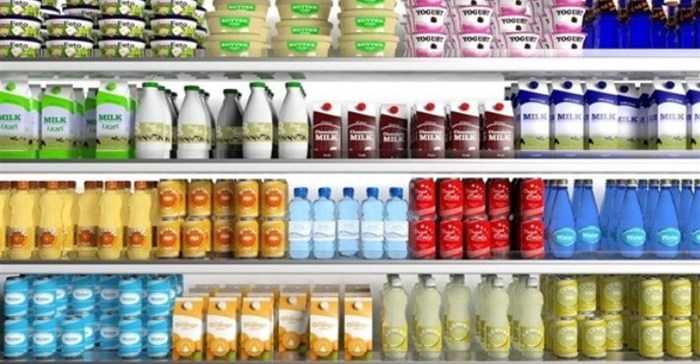With sustainability and recycling on the legislative agenda globally, it's only a matter of time before non-sustainable practices are met with penalties and brands are taking preventative measures.
Sustainable packaging has started to receive increased attention, and rightly so. This has encouraged leading brands across all sectors to review their use of plastics and consider alternative, recyclable materials. But even more than fear of penalties, consumer demand is leading the way.
According to packaging design agency Stratcom Branding, landfill sites are slowly infiltrating our landscapes and the long-term effects are detrimental to our environment. "Packaging within FMCG for example, produces high quantities of unwanted waste and hence disposing of this comes at a significant cost with negative environment impacts so hence the need for more sustainable packaging is a must within the FMCG space," says the company.
"Studies from as early as 2014 found that 81% of millennials expect their favourite companies to make public declarations of their corporate citizenship – simply put, people, millennials most of all, want the companies they buy from to practice sustainable and ethically-minded business."
Accelerating demand for sustainable products and responsible corporate behaviour are reshaping the food, beverage and restaurant industries – and with them the food packaging industry. The industry has also seen a rise in brands with an organic and natural ethos, and for good reason.
Stratcom Branding says this has allowed packaging to become a key method of differentiation and a creative way to build and maintain trust between a brand and its customers. So, for these companies, it’s important to use a packaging solution that reflects their values and with 66% of consumers willing to spend more on a product if it comes from a sustainable source – it’s a trend we can expect to continue.
What is sustainable packaging?
Simply put it’s the development and use of packaging which results in improved sustainability. This involves the use of life cycle inventory (LCI) and life cycle assessment (LCA) processes to help guide the use of packaging which reduces the environmental impact and ecological footprint.
Challenges to introducing sustainable packaging
If we all understand the importance and need for more sustainable packaging, the question we have to ask is, “Why do companies fail to package their products sustainably?”
Gail Macleod, CEO of Stratcom Branding and founder member of the glba (Global Local Branding Alliance, a packaging and design disruptor in South Africa) advises that there are fast advancing technologies that can boost green friendly packaging, but many companies continue to commit packaging mistakes.
The main issue, according to Macleod, is that businesses still tend to focus on two objectives: how will the packaging attract consumers and, secondly, how much will it cost? Leaving sustainability as a third, less important objective for some businesses.
Packaging affects the entire supply chain, starting with the material producer to the converter, to the brand owner and retailer, to the waste and recycling organisations. And back again.
Determining which new material is best to invest in, is a challenge for packaging manufacturers and is affected by issues ranging from public opinion to cost. Unfortunately, the reality of creating attractive and economical packaging is not always sustainable. For example, Styrofoam containers might be inexpensive to produce, but may also be resource-intensive and wasteful.
Potato crisp bags are made from several layers of foil and plastic and are light, so this helps with shipping large volumes and with storage space on shelves. The downside to this is there is no machinery to separate the many layers used to create these attractive lightweight chip bags so hence they are non-recyclable.
Another concern, says Macleod, is how highly over-packaged products can still cost less than sustainably packaged ones? For now, eco-friendly goes against the norm and trends and cannot compete with the unsustainable packages marketed in such high quantities.
"Our hope is that when the manufacturing capabilities and competition for market share catch up to the growing demand for sustainable packaging, prices will come down," she says.
Benefits of implementing more sustainable packaging
Go green - Decrease your carbon footprint
The amount of carbon dioxide released by the use of fossil fuels is known as the carbon footprint. Not many people realise this, but the weight of packaging materials impacts the amount of energy required to produce and deliver the finished product. A shift to more lightweight materials for packaging can positively impact the reduction of one’s carbon footprint.
Health-inspired packaging - Free of allergens and toxins
Today’s consumer is highly concerned with what products are made out of and the impact they have on their health. The use of biodegradable packaging is non-toxic and allergy free making it a wise choice to use biodegradable materials.
Increased storage and space
More sustainable packaging entails a re-think of the creativity behind the packaging design and in most cases, one starts looking at how much material is being, used as well as how the material is used for the packaging.
The shift to sustainable packaging lends itself to smaller packages with the end-result being increased storage space to store additional products. This means more products and expand your product line. Smaller packages will impact on transport costs as less deliveries or smaller transport vehicles will be required for distribution of the end-product.
Increase revenue
A survey by Nielsen in 2016, indicated that millennials would be willing to pay more for sustainable goods. Today’s well-informed consumer considers various factors when making a purchase and the effect a brand has on the environment is one of the first. You can increase sales by attracting the consumers that are keen on purchasing brands that are focussed on protecting the environment rather than harming it.
Cost saving
Sustainable and eco-friendly products are packaged in more lightweight materials which has a direct cost saving impact on deliveries to and from the consumer. So, if products need to be returned let them be hassle free and sustainable. another way to positively influence the consumer.
"Savvy consumers have an increased awareness of their environment and the dangers unsustainable packaging poses to it. This is indeed a challenge for the packaging industry, to meet and respond to these demands but it must also be an opportunity for the industry to create something extraordinary that will make a real difference," says Macleod.
"Sustainable packaging may not be something that can be changed overnight, but it’s something worth striving towards and the long-term benefits are rewarding, from reducing your carbon footprint to increased sales.
"If you haven’t started already, you should be talking to someone that can encompass beautiful packaging with sustainability in mind. It is after all, the way you will have to move very shortly to survive the change."

















































